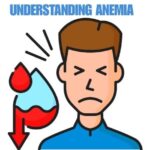Attention-Deficit/Hyperactivity Disorder (ADHD) is a prevalent neurodevelopmental disorder characterized by a persistent pattern of inattention, hyperactivity, and impulsivity. Affecting millions of individuals worldwide, ADHD is often diagnosed in childhood but can continue into adulthood, impacting various aspects of life, including education, work, and relationships.
The presentation of ADHD can vary significantly from one person to another. While some may struggle primarily with inattention, others may exhibit hyperactive or impulsive behaviors, and many individuals may experience a combination of both. This variability makes ADHD a complex condition that can be challenging to diagnose and manage.
ADHD is not merely a childhood issue; many adults also grapple with its effects, which can manifest as difficulties in focusing, maintaining organization, managing time, and regulating emotions. The implications of ADHD can lead to academic challenges, occupational difficulties, strained relationships, and increased risk of co-occurring mental health disorders, such as anxiety and depression.
Despite its challenges, ADHD is also associated with unique strengths and abilities. Many individuals with ADHD are highly creative, energetic, and innovative thinkers. Understanding ADHD involves recognizing both the difficulties it presents and the strengths that can arise from it.
As awareness of ADHD has grown, so has the understanding of its underlying causes and effective management strategies. This article aims to provide a comprehensive overview of ADHD, delving into its symptoms, causes, diagnosis, treatment options, and practical strategies for living well with the disorder. By equipping individuals and their families with knowledge, we hope to foster a more supportive environment that promotes understanding and acceptance of ADHD.
Types of ADHD?
- Predominantly Inattentive Presentation: Characterized by significant difficulties in sustaining attention, organizing tasks, and following through on instructions. Individuals may appear forgetful or easily distracted.
- Predominantly Hyperactive-Impulsive Presentation: Marked by excessive fidgeting, difficulty remaining seated, impulsive actions, and challenges in waiting for turns. Individuals may often interrupt others or speak out of turn.
- Combined Presentation: This type includes symptoms of both inattention and hyperactivity-impulsivity, making it the most common presentation of ADHD.
Symptoms of ADHD
The symptoms of Attention-Deficit/Hyperactivity Disorder (ADHD) can be categorized into two main domains: inattention and hyperactivity-impulsivity. While some individuals may primarily exhibit symptoms from one category, many experience a combination of both. The severity and presentation of symptoms can vary widely among individuals. Below is a more detailed exploration of the symptoms associated with ADHD.
1. Inattention
Inattention refers to difficulties in sustaining focus, organizing tasks, and following through on instructions. Key symptoms include:
- Difficulty Sustaining Attention: Individuals may struggle to remain focused on tasks, particularly those that are lengthy or monotonous. This can lead to incomplete work or frequent shifts in attention.
- Careless Mistakes: Many individuals with ADHD make mistakes in schoolwork or other activities due to overlooking details. This can be misinterpreted as a lack of effort or carelessness.
- Forgetfulness: Forgetting daily activities, such as chores, appointments, or returning calls, is common. Individuals may appear disorganized or unreliable.
- Disorganization: Challenges with organizing tasks and materials can result in messy workspaces, misplaced items, and difficulties in completing projects on time.
- Avoidance of Tasks: There may be a tendency to avoid tasks that require sustained mental effort, such as homework, reading, or long assignments. This avoidance can stem from a sense of overwhelm or frustration.
- Difficulty Following Instructions: Individuals may struggle to complete tasks that involve multiple steps or complex instructions, often leaving assignments unfinished.
2. Hyperactivity-Impulsivity
Hyperactivity-impulsivity encompasses behaviors that are excessive and impulsive. Key symptoms include:
- Fidgeting or Restlessness: Individuals may frequently tap their hands or feet, squirm in their seats, or have difficulty remaining still during activities that require it (e.g., sitting in class).
- Excessive Talking: Many individuals with ADHD talk excessively, often interrupting others or dominating conversations. This can lead to challenges in social situations.
- Impulsivity: Impulsive behaviors can manifest as acting without thinking, interrupting conversations, or blurting out answers in class. This impulsivity can lead to risky behaviors, such as reckless driving or substance use.
- Difficulty Waiting: Individuals may have trouble waiting for their turn in group settings, often jumping ahead in conversations or activities.
- Inability to Participate in Quiet Activities: Many individuals find it challenging to engage in activities that require calmness or quiet, such as reading or attending events where silence is expected.
3. Age-Related Differences
The expression of ADHD symptoms can change with age:
- Children: Symptoms in children often manifest as noticeable hyperactivity and impulsivity. They may struggle in school, have difficulty with friendships, and display disruptive behaviors.
- Adolescents: As children grow into adolescence, hyperactivity may decrease, but symptoms of inattention and impulsivity often persist. Teens may face new challenges related to academic performance, social dynamics, and increased independence.
- Adults: Adults with ADHD may exhibit less overt hyperactivity but continue to experience challenges with attention, organization, and time management. Emotional regulation can also become a significant issue, leading to difficulties in personal and professional relationships.
4. Emotional and Social Implications
ADHD symptoms can also have emotional and social ramifications:
- Emotional Dysregulation: Many individuals with ADHD experience difficulties managing their emotions, leading to mood swings, frustration, or irritability. This can impact relationships and self-esteem.
- Social Challenges: Impulsivity and difficulties in social cues can lead to challenges in forming and maintaining friendships. Individuals may struggle with understanding social norms or responding appropriately in social situations.
- Low Self-Esteem: Frequent criticism or negative feedback due to ADHD behaviors can contribute to low self-esteem and feelings of inadequacy, particularly in children and adolescents.
The symptoms of ADHD are varied and can significantly impact daily life. Understanding these symptoms is crucial for early identification and effective intervention. Recognizing both the challenges and strengths associated with ADHD can empower individuals and their families to seek appropriate support and strategies for success. By fostering awareness and understanding, we can create a more supportive environment for those affected by ADHD.
Causes and Risk Factors
Understanding the causes and risk factors associated with Attention-Deficit/Hyperactivity Disorder (ADHD) is crucial for developing effective prevention and treatment strategies. While the exact cause of ADHD remains unclear, research indicates that a combination of genetic, environmental, and neurological factors contributes to its development. Here’s a detailed overview of these factors.
1. Genetic Factors
Genetics play a significant role in the likelihood of developing ADHD:
- Family History: ADHD tends to run in families. Individuals with a parent or sibling diagnosed with ADHD are at a higher risk of developing the condition themselves. Studies suggest that the heritability of ADHD is around 70-80%, indicating a strong genetic component.
- Specific Genes: Research has identified certain genes that may be linked to ADHD, particularly those involved in the regulation of neurotransmitters, such as dopamine. Variations in these genes can affect brain chemistry and behavior.
2. Neurological Factors
Differences in brain structure and function have been observed in individuals with ADHD:
- Brain Anatomy: Studies using neuroimaging techniques have found that certain areas of the brain, such as the prefrontal cortex, basal ganglia, and cerebellum, may be smaller or less active in individuals with ADHD. These areas are associated with attention, impulse control, and executive functioning.
- Neurotransmitter Imbalances: ADHD is thought to be related to imbalances in neurotransmitters, particularly dopamine and norepinephrine. These chemicals play a critical role in attention and behavior regulation.
3. Environmental Factors
Certain environmental influences during pregnancy and early childhood may increase the risk of developing ADHD:
- Prenatal Exposure: Exposure to substances such as tobacco smoke, alcohol, and illicit drugs during pregnancy has been associated with a higher risk of ADHD in children. Maternal stress and poor nutrition during pregnancy may also play a role.
- Lead Exposure: Children exposed to lead, particularly in older homes or through contaminated water, have been found to have a higher likelihood of developing ADHD. Lead exposure can negatively impact brain development and function.
- Low Birth Weight and Prematurity: Babies born prematurely or with a low birth weight are at an increased risk of developing ADHD. Factors related to birth complications may affect brain development.
4. Psychosocial Factors
Certain psychosocial factors can contribute to the likelihood of developing ADHD:
- Family Environment: A chaotic home environment, including inconsistent parenting practices, high levels of stress, and family conflict, can exacerbate ADHD symptoms or increase the risk of developing the disorder.
- Socioeconomic Status: Research has shown that children from lower socioeconomic backgrounds may be at a higher risk for ADHD. This may be linked to factors such as access to healthcare, educational opportunities, and exposure to environmental toxins.
5. Comorbid Conditions
Individuals with ADHD often have co-occurring conditions that may influence its development and presentation:
- Learning Disabilities: Many children with ADHD also have learning disabilities, which can complicate their educational experiences and increase frustration and behavioral issues.
- Anxiety and Mood Disorders: Anxiety and depression frequently co-occur with ADHD. These conditions can amplify symptoms and complicate diagnosis and treatment.
6. Cultural and Social Influences
Cultural perceptions and societal factors can impact the diagnosis and management of ADHD:
- Cultural Attitudes: In some cultures, behaviors associated with ADHD may be viewed differently, potentially affecting diagnosis and treatment. Understanding cultural context is important in providing appropriate care.
- Awareness and Stigma: The level of awareness about ADHD varies across communities, affecting access to diagnosis and treatment. Stigmatization of mental health issues can also deter individuals from seeking help.
While the exact causes of ADHD are not fully understood, it is clear that a combination of genetic, neurological, environmental, and psychosocial factors contributes to its development. Recognizing these risk factors can aid in early identification and intervention, leading to better outcomes for individuals with ADHD. Understanding the complexity of ADHD helps foster a supportive environment for those affected by the disorder.
Diagnosis of ADHD
Diagnosing Attention-Deficit/Hyperactivity Disorder (ADHD) is a multifaceted process that requires careful evaluation by qualified healthcare professionals. Given that ADHD shares symptoms with various other conditions, accurate diagnosis is essential for effective management. Here’s a detailed look at the diagnosis of ADHD.
1. Understanding Diagnostic Criteria
ADHD is diagnosed based on specific criteria outlined in the Diagnostic and Statistical Manual of Mental Disorders (DSM-5). The DSM-5 specifies that for a diagnosis, symptoms must meet the following criteria:
- Presence of Symptoms: At least six symptoms of inattention and/or hyperactivity-impulsivity must be present for children up to age 16, or five symptoms for adolescents 17 and older and adults.
- Duration: Symptoms must persist for at least six months and be inappropriate for the developmental level of the individual.
- Age of Onset: Symptoms must have been present before the age of 12.
- Impairment: Symptoms must cause significant impairment in social, academic, or occupational functioning.
- Exclusion of Other Conditions: Symptoms should not be better explained by another mental disorder (e.g., anxiety or mood disorders).
2. Initial Assessment
The diagnostic process typically begins with an initial assessment, which may include:
- Clinical Interviews: Healthcare providers often conduct interviews with the individual suspected of having ADHD and, when applicable, with parents or guardians. These interviews gather detailed information about symptoms, behaviors, and family history.
- Behavioral Observations: Observations of behavior in different settings (home, school, work) can provide insights into how symptoms manifest in various contexts.
3. Standardized Rating Scales
To quantify the symptoms and assess their severity, healthcare professionals often use standardized rating scales. These may include:
- Conners’ Rating Scales: These scales help assess behavioral, emotional, and academic problems in children and adolescents.
- Vanderbilt ADHD Diagnostic Rating Scale: This tool is commonly used to evaluate symptoms and their impact on functioning. It includes forms for both parents and teachers.
- Adult ADHD Self-Report Scale (ASRS): For adults, this self-report questionnaire helps screen for ADHD symptoms and their impact on daily life.
4. Gathering Information from Multiple Sources
A comprehensive diagnosis often involves gathering information from various sources to understand the individual’s symptoms better:
- Parent and Teacher Reports: Input from parents and teachers is crucial, especially for children. Teachers can provide insights into the child’s behavior in a structured environment and how it compares to peers.
- Self-Reports: Adults may complete questionnaires or interviews that reflect their experiences and challenges related to ADHD symptoms.
5. Clinical Evaluation
A clinical evaluation by a qualified healthcare professional (such as a psychologist, psychiatrist, or pediatrician) is essential. This evaluation may include:
- Cognitive Testing: Assessments of cognitive functioning, including attention, memory, and executive functioning, can help determine if ADHD is present and to what extent it affects daily functioning.
- Physical Examination: A physical exam can help rule out other medical conditions that might cause symptoms similar to those of ADHD, such as sleep disorders or thyroid problems.
6. Differential Diagnosis
Accurate diagnosis of ADHD also requires ruling out other conditions that may present similar symptoms. Some common conditions to consider include:
- Anxiety Disorders: Symptoms of anxiety can overlap with ADHD, particularly inattention and restlessness.
- Mood Disorders: Depression and bipolar disorder can also affect attention and behavior.
- Learning Disabilities: These can impact academic performance and may coexist with ADHD.
- Autism Spectrum Disorder (ASD): Some individuals with ASD may exhibit symptoms similar to ADHD, necessitating careful evaluation.
7. Collaboration and Follow-Up
Once a diagnosis is made, follow-up appointments are often necessary to:
- Monitor Symptoms: Regular check-ins can help track the effectiveness of treatment plans and make adjustments as needed.
- Reassess Diagnosis: As individuals grow and change, re-evaluating the diagnosis may be necessary to ensure appropriate management.
The diagnosis of ADHD is a comprehensive and collaborative process that involves multiple steps and sources of information. By understanding the diagnostic criteria, utilizing standardized assessments, and considering the individual’s unique context, healthcare professionals can make accurate diagnoses. Early and accurate diagnosis is crucial for implementing effective treatment strategies and improving the quality of life for those with ADHD.
Treatment and Management
ADHD treatment typically involves a combination of medication, behavioral therapy, and lifestyle changes. The goal is to reduce symptoms and improve functioning.
Medication
Medications are often prescribed to help manage ADHD symptoms. They can be classified into two main categories:
- Stimulants: These are the most commonly prescribed medications for ADHD and include drugs like methylphenidate (Ritalin) and amphetamine-based medications (Adderall). They work by increasing the levels of certain neurotransmitters in the brain, improving attention and focus.
- Non-Stimulants: For individuals who do not respond well to stimulants or experience undesirable side effects, non-stimulant medications such as atomoxetine (Strattera) may be prescribed. These medications can also help manage ADHD symptoms, though they may take longer to show effects.
Behavioral Therapy
Behavioral therapy can be beneficial, especially for children with ADHD. This type of therapy focuses on:
- Developing Coping Strategies: Teaching individuals techniques to manage their symptoms and improve organization and time management skills.
- Parent Training: Helping parents understand ADHD and learn effective strategies for supporting their children.
- Social Skills Training: Improving interpersonal skills and helping individuals navigate social situations.
Lifestyle Changes
In addition to medication and therapy, lifestyle changes can support better management of ADHD symptoms:
- Structured Routine: Establishing a consistent daily routine can help individuals with ADHD stay organized and reduce anxiety.
- Healthy Diet: A balanced diet rich in fruits, vegetables, whole grains, and lean proteins can support overall health and well-being.
- Regular Exercise: Physical activity has been shown to improve focus and reduce symptoms of hyperactivity and impulsivity.
- Adequate Sleep: Prioritizing good sleep hygiene is crucial, as poor sleep can exacerbate ADHD symptoms.
Living with ADHD
Living with Attention-Deficit/Hyperactivity Disorder (ADHD) can present unique challenges, but with effective strategies and support, individuals can manage their symptoms and lead fulfilling lives. Here are some comprehensive tips and approaches for coping with ADHD in daily life.
1. Education and Self-Advocacy
- Understand ADHD: Learning about ADHD can empower individuals and families. Understanding how the disorder affects behavior, focus, and emotions can help in developing effective coping strategies.
- Communicate Needs: Being open about ADHD with teachers, employers, and peers can foster understanding and support. Self-advocacy involves explaining how ADHD affects your work and what accommodations might help.
2. Establishing Routines
- Structured Environment: Creating a consistent daily routine can help reduce chaos and improve focus. Having a set schedule for activities like meals, homework, and bedtime can provide predictability.
- Use Visual Aids: Calendars, checklists, and reminders can help keep track of tasks and appointments. Color-coding can also make information easier to process and remember.
3. Time Management Techniques
- Break Tasks into Smaller Steps: Large tasks can feel overwhelming. Breaking them into smaller, manageable steps can make them feel more achievable.
- Set Timers: Using timers for specific tasks can help maintain focus. The Pomodoro Technique, which involves working for 25 minutes followed by a short break, can be particularly effective.
4. Creating a Supportive Environment
- Minimize Distractions: Identify and reduce distractions in your workspace. This might include a quiet room, using noise-canceling headphones, or decluttering your desk.
- Organizational Tools: Invest in organizational tools like planners, apps, or digital calendars. These can help manage tasks and deadlines more effectively.
5. Healthy Lifestyle Choices
- Balanced Diet: A nutritious diet can impact mood and energy levels. Incorporating omega-3 fatty acids, whole grains, and plenty of fruits and vegetables may be beneficial.
- Regular Exercise: Physical activity has been shown to help improve focus, reduce impulsivity, and manage stress. Aim for at least 30 minutes of moderate exercise most days of the week.
- Quality Sleep: Prioritizing good sleep hygiene is crucial. Establishing a calming bedtime routine, limiting screen time before bed, and creating a comfortable sleep environment can improve sleep quality.
6. Mindfulness and Stress Management
- Mindfulness Practices: Techniques like mindfulness meditation, deep breathing exercises, and yoga can help improve focus and reduce anxiety. Regular practice can enhance emotional regulation and self-awareness.
- Stress-Relief Techniques: Finding healthy outlets for stress, such as hobbies, art, or music, can provide a positive distraction and enhance overall well-being.
7. Seeking Professional Support
- Therapy Options: Cognitive-behavioral therapy (CBT) can help individuals develop coping strategies, manage symptoms, and address negative thought patterns. Other therapeutic approaches may include coaching or counseling.
- Support Groups: Joining support groups for individuals with ADHD or their families can provide a sense of community and shared understanding. These groups offer a platform to exchange experiences and strategies.
8. Accommodations and Support at School or Work
- Educational Accommodations: Students with ADHD may benefit from accommodations such as extended time on tests, preferential seating, or the option to use technology for note-taking.
- Workplace Adjustments: Adults with ADHD can discuss potential accommodations with employers, such as flexible work hours, the option to work remotely, or access to quiet workspaces.
9. Building Social Skills
- Social Skills Training: Participating in social skills training can help improve communication and relationship-building abilities. Practicing scenarios with a therapist or coach can enhance confidence in social interactions.
- Finding Supportive Relationships: Surrounding yourself with understanding and supportive friends and family can make a significant difference in managing ADHD.
Living with ADHD requires patience, understanding, and effective strategies. By utilizing the right tools, seeking support, and fostering a positive environment, individuals with ADHD can harness their strengths and thrive in various aspects of life. Emphasizing self-advocacy, education, and community support can lead to greater success and well-being.

ADHD is a complex disorder that affects millions of individuals worldwide. By understanding its symptoms, causes, diagnosis, and treatment options, individuals and families can take proactive steps toward effective management. With the right support and strategies in place, those with ADHD can thrive in various aspects of their lives.







